Of the eight major islands in the Great Salt Lake, Antelope Island is the largest at 15 miles long and 4.5 miles wide. Frary Peak reaches an elevation of 6596 feet. The island has an intriguing history, interesting geology and free roaming herds of bison, bighorn sheep, mule deer and pronghorn, in addition to a variety of smaller mammal species and plentiful birds. It is one of my very favorite photography locations – especially for birds. In this blog post I will present an overview of the island and some of its wildlife. My next post will deal specifically with bird photography on the island.
The north end of Antelope Island at sunrise as seen from the causeway access road
There is a 7 mile long causeway road that provides the only access to the island, which is actually a peninsula when the Great Salt Lake water levels are low. It’s common to see a variety of wildlife along this causeway including coyotes sprinting at the first sight of an early morning vehicle, American Kestrels, Northern Harriers, Burrowing Owls, Common Ravens and a variety of waterfowl and shorebirds where the water comes closer to the causeway.
Approaching the north end of Antelope Island
As you get closer to the island the water comes right up to the causeway’s edge and typically there’s hordes of waterfowl and shorebirds very close to the road. In the photo above, several shoreline levels of ancient Lake Bonneville can be seen where wave action eroded “benches” in the sides of the old sloping shoreline.
White Rock Bay as seen from Buffalo Point
In the above photo you get a feeling for just how shallow much of the Great Salt Lake is. An increase in water level of just a few inches would return the lake edge all the way to the semicircular shoreline to the left. The white sand you see between the water’s edge and that shoreline is called oolitic (egg) sand. Each grain is egg-shaped because it is produced by concentric layers of calcium carbonate that precipitate around a core of brine shrimp fecal pellets. A handful of it feels very lightweight compared to the same amount of traditional silica sand. More ancient levels of old Lake Bonneville can also be seen on the side of the background mountain in this view.
Tintic Quartzite boulder and rocks
The northern third of the island is littered with boulders and rocks made of 550 million year old Tintic Quartzite which was deposited at the bottom of an ancient shallow sea. These rocks are striking but they don’t make very good perches for bird photography because they’re so bright, unless you have early morning light.
Farmington Canyon Complex rocks on Antelope Island
The rocks on the southern two-thirds of the island are part of a geological formation called the Farmington Canyon complex. This formation is 2.7 billion years old which is even older than the rocks at the bottom of the Grand Canyon. These rocks make more appealing perches for bird photography because of their darker color but I’ve had a devil of a time finding many cooperative birds on them for some reason.
Bison on the lower slopes of Antelope Island
Antelope Island is probably best known for its large free roaming bison herd. Twelve animals were introduced there in 1893 and they were the core of the herd that today numbers between 500 and 700 individuals. Most of the islands 40 major fresh water springs are found on the east slope so the bison often congregate in these areas for the water and the green grass.
Bison trails on the east slope
What may appear to be a dirt road running diagonally through the photo above is actually a bison trail leading down to the springs at the base of the island. The thinner lines are feeder trails. It’s not uncommon to see many animals coming down these trails in the mornings.
Pronghorn male
Another common and conspicuous large mammal on the island is the Pronghorn. Often called Antelope or Pronghorn Antelope, they are not an antelope at all. They are the only surviving species of family Antilocapridae.
Coyote at a lope
Coyotes are fairly common on the island but relatively difficult to see. They’re shy of people and vehicles but early morning visitors can sometimes get close to one. Bobcats, Bighorn Sheep and a variety of smaller mammals also call Antelope Island home. Much of the island is inaccessible however and the bighorns in particular seem to hang out in the higher reaches of the west side so I’ve never seen or photographed one.
Antelope Island is one of my favorite bird photography locations in Utah. My next blog post will be devoted specifically to bird photography on the island.
Ron


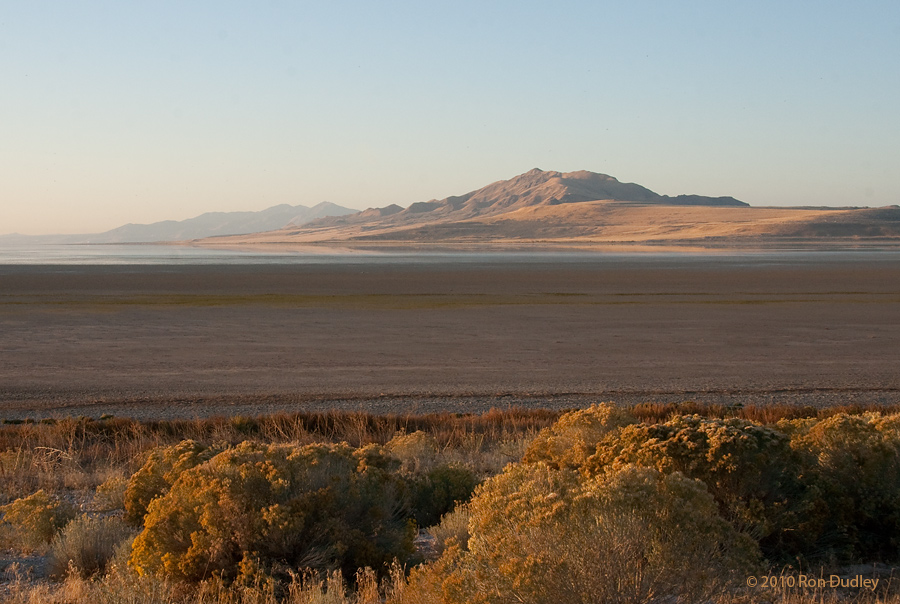
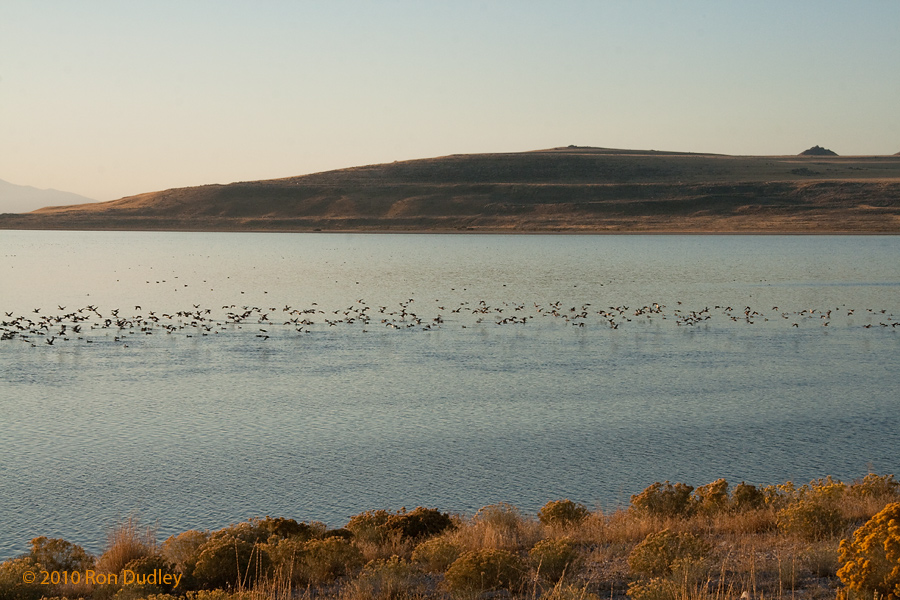
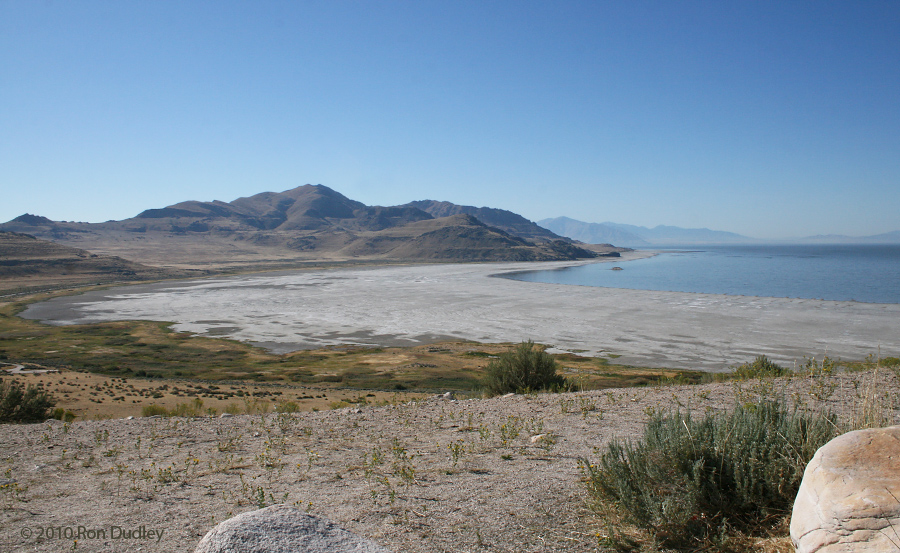
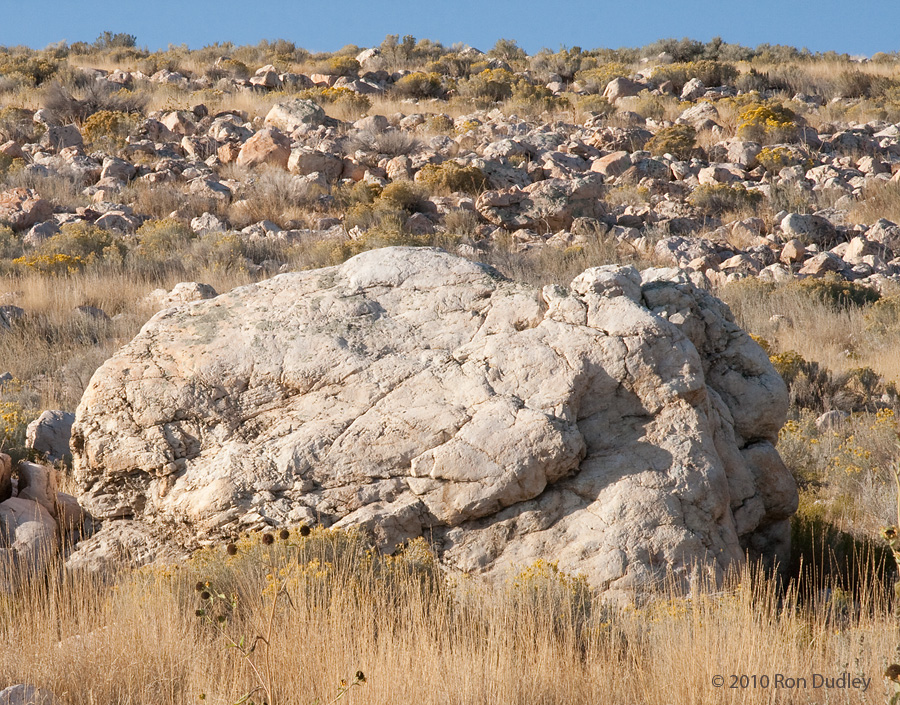
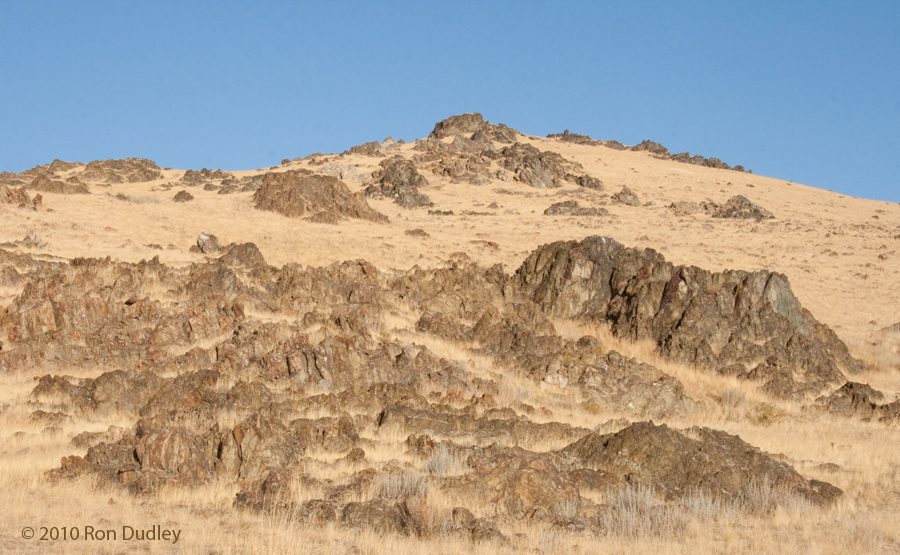
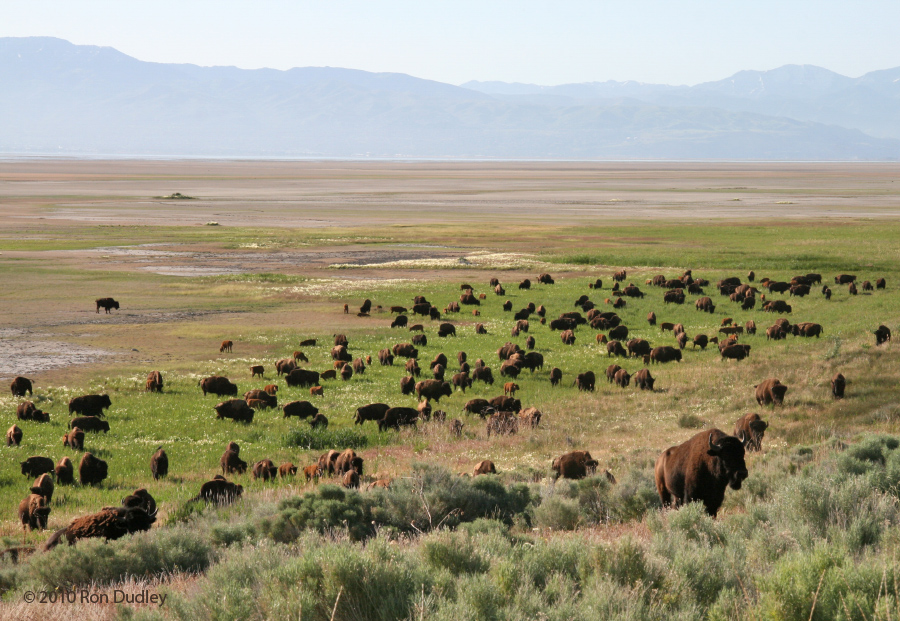
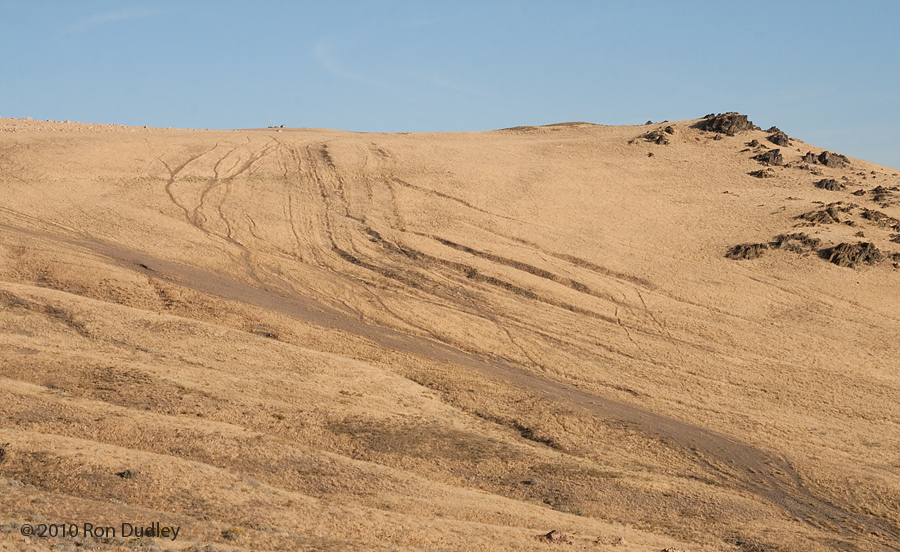

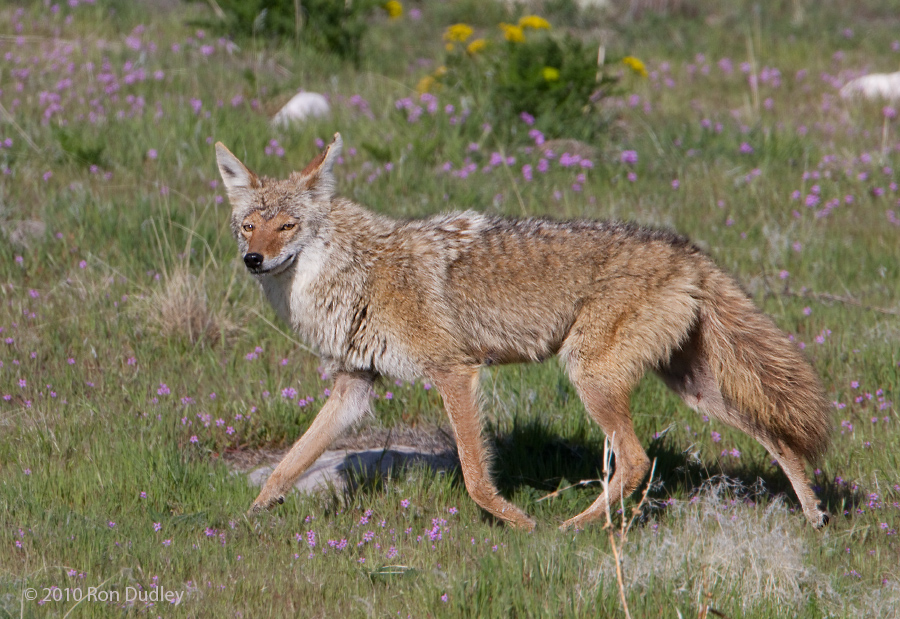
Fascinating history Ron. Looking forward to the Avian sequel.